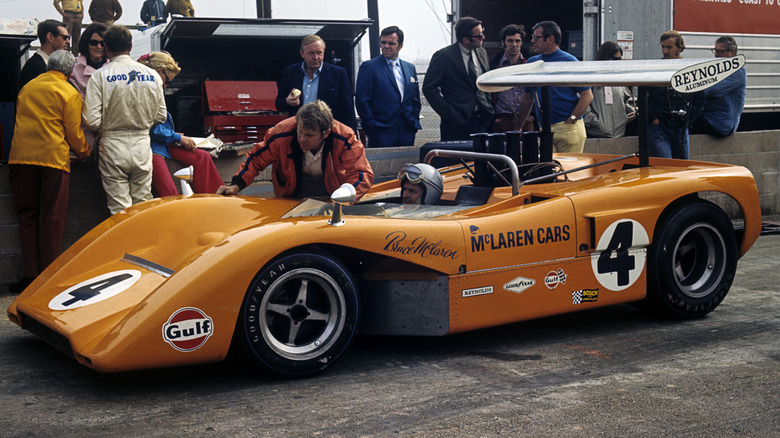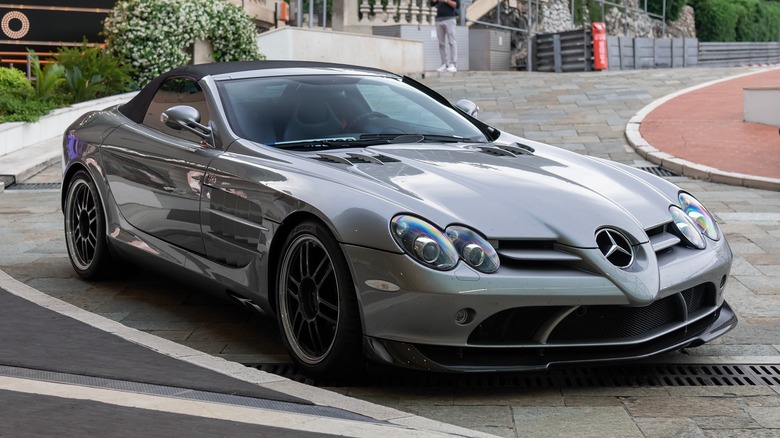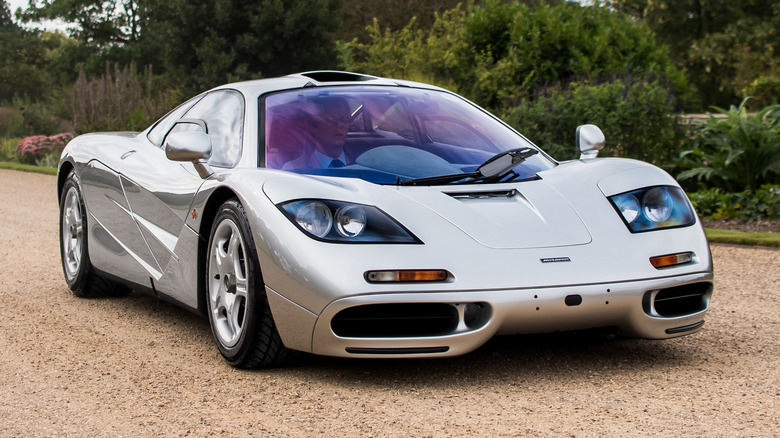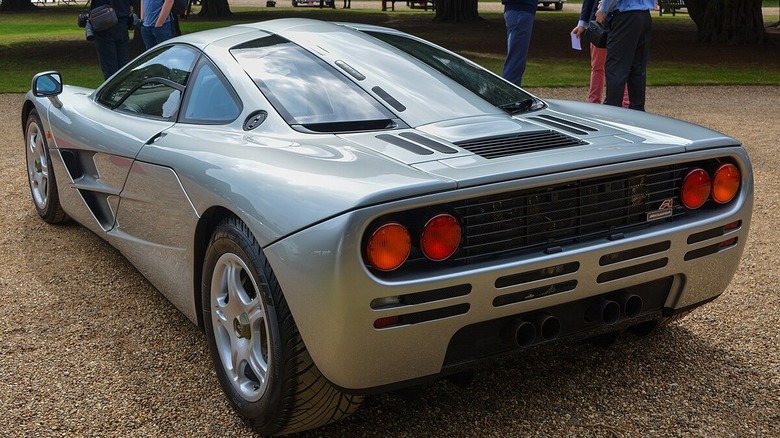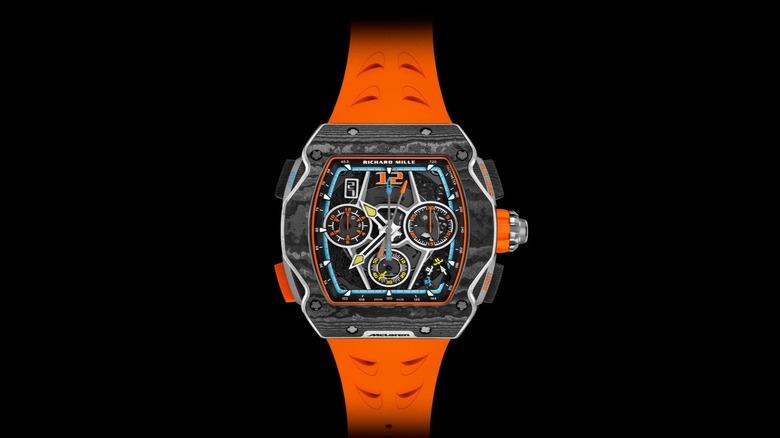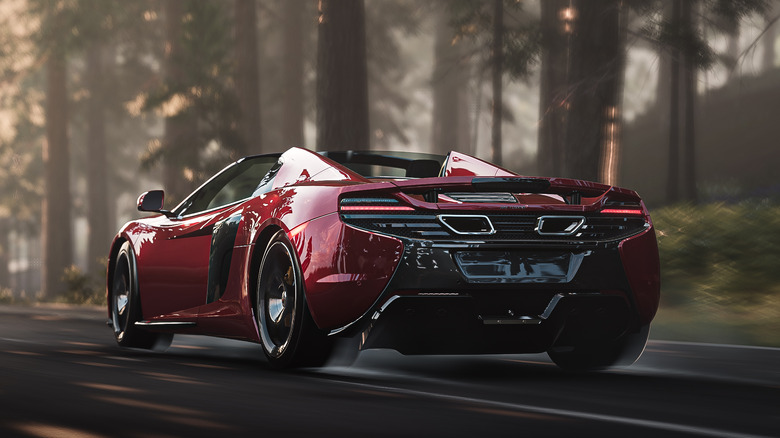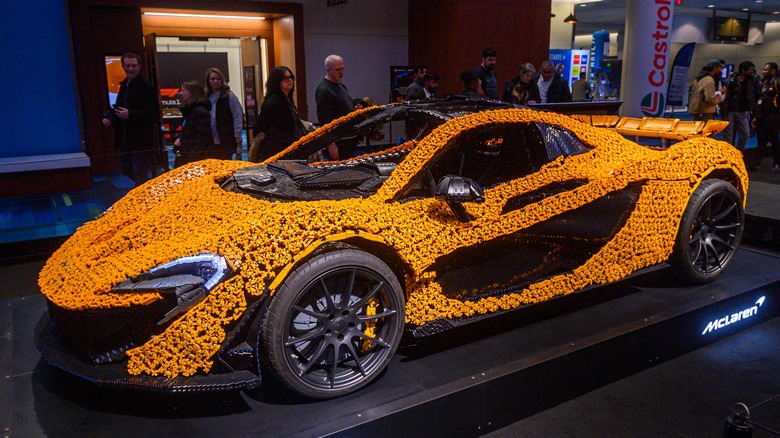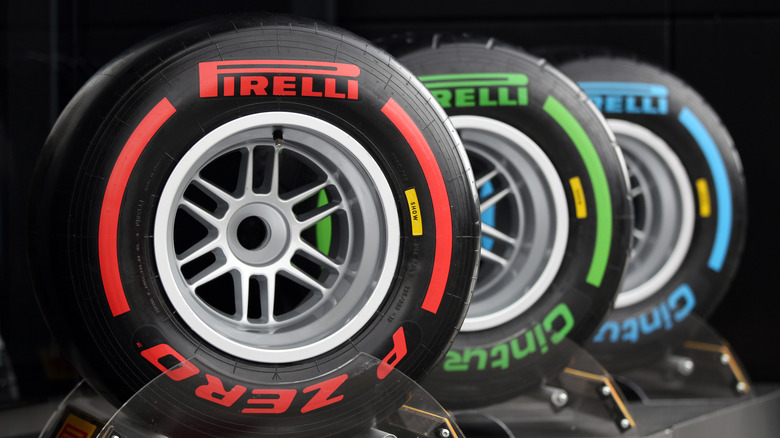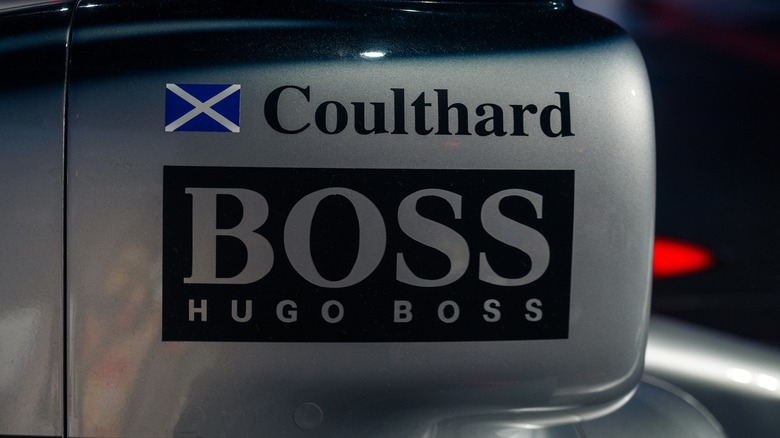10 Of The Best McLaren Collaborations Of All Time
Started in 1963 by legendary racer Bruce McLaren, the McLaren brand established its reputation on the back of his many F1 successes. Despite McLaren's untimely death at the age of 32 in 1970, the brand's legacy of speed and innovation lives on.
McLaren has crafted some of the most iconic street and track cars of the past fifty years. From the groundbreaking McLaren F1 of the 1990s to the highly anticipated $2.1 million W1 supercar, it's a safe bet that Bruce McLaren would look upon the company bearing his name with pride.
However, despite having nestled itself into the zeitgeist of its age as a premium constructor, the McLaren brand extends beyond just its own vehicles. The British auto builder has built its success not only on stylish design and state-of-the-art engineering but also with collaborations with other brands.
Whether it's the iconic Pirelli P Zero Trofeo R tires on the McLaren 765LT, the McLaren Senna Lego Speed Champions set, the McLaren-Hugo Boss sportswear collection, or the groundbreaking partnership with Mercedes-Benz for the McLaren SLR, McLaren's collaborations have consistently delivered some of the most incredible products of recent years. Let's examine some of it's best partnerships.
Mercedes
Few automakers have as much cache as Mercedes, and when it joined forces with McLaren in 1995, it was like a dream come true for car fans. The collaboration began with McLaren establishing an engine partnership with Mercedes. The German company would supply the engines for McLaren's F1 cars, and the British company would do the rest. The collaboration met with success on the track, though controversy would follow.
The partnership produced at least one now-classic street car in the 2003 Mercedes-Benz SLR McLaren. The supercharged 5.4-liter V8 speedster with 617 horsepower, distinctive styling and an undeniable pedigree was a $450,000 (about $785,000 today) splash in the market. It remains a desirable relic of the original collaboration.
After working together for years, Mercedes ended up owning 40% of McLaren, a chicken that came home to roost when a 2007 spying scandal levied a fine of $100 million against the team, $40 million of which Mercedes would be responsible for paying. Over the next few years, the relationship cooled and finally ended in 2015 when Mercedes announced it would supply engines for its own team, Mercedes-AMG Petronas Formula One.
The two teams rekindled their love in 2021 when Mercedes agreed to once again power McLaren's F1 cars, this time as an engine supplier only. Though the relationship is less involved than its used to be, the teams seem to get along. In 2023, they announced an extension of the deal that would last until at least 2030.
BMW
Similar to its Mercedes partnership, McLaren's relationship with BMW began when the British builder tapped the company to develop an engine. Except this time, the engine wasn't for an F1 car. It was for the F1 car.
The original McLaren F1 began production in 1992. Only 106 units were ever built, and each was capable of shattering world speed records. In 1994, Car and Driver road tested it, sprinting to 60 mph in 3.2 seconds, 100 mph in 6.3 seconds, and 200 mph in 28 seconds. It became the fastest production car in the world in 1998, with a top speed of 240.1 mph. It's almost hard to grasp just how fast the McLaren F1 really is, even decades after its introduction.
Often buried in the fine print of all of these incredible stats is the fact that BMW was behind the F1's engine. Dubbed the S70/2, the engine came out of BMW's Motorsport Division, the same branch of the company responsible for its vaunted M cars. The 6.1-liter V12, with 627 hp and 480 lb-ft of torque, the V12 propelled the F1 to the top of the supercar heap, where it has remained ever since.
More than 30 years later, the McLaren F1 remains one of the fastest naturally aspirated supercars in the world. That's no mean feat, especially considering the rate of technological developments and the ultra-competitive nature of performance car makers. And it's due in large part to a partnership with BMW.
Toyota
It is impossible to overstate the importance of aerodynamics in racing. Once upon a time, a car's performance relied on stuffing the most overpowered engine into the lightest chassis you could make. Brabham became the first team to test in a wind tunnel in 1963, but it wouldn't become regular until the 1980s. Nowadays, being a hundredth of a second faster can make the difference between victory and defeat, so every facet of car design is explored to the nth degree.
Today's Formula 1 cars are so meticulously designed and tested that they could theoretically run on a track upside down at speed, given how much downforce they generate. Wind tunnel testing is expensive and laborious, with purpose-built facilities required. Ford recently spent as much as $200 million on its new facility.
When Toyota departed Formula 1 in 2009, McLaren saw an opportunity. The Japanese builder had a wind tunnel facility in Cologne, Germany, not too far from McLaren's headquarters in Woking, U.K. Striking a deal, McLaren began testing its cars in Toyota's facility starting in 2010. Since then, the tunnel has been used to develop McLaren F1 cars from the MP4-26 up through 2023's MCL60.
Though McLaren ultimately built its own wind tunnel, its relationship with Toyota grew during the nearly 15-year period they worked together in Cologne. In 2024, McLaren signed Toyota factory driver Ryo Hirakawa in a deal that included sharing simulator and testing programs. The best may yet come for the Toyota and McLaren partnership.
VDL Bova Futura
Not every partnership results in podium appearances and record-breaking production cars. Though McLaren is a huge name, it remains a smaller company compared to Ford, Toyota, or Mercedes. While those industrial behemoths enjoy the advantages of economies of scale, McLaren and its ilk can hardly develop every little piece of its cars from scratch. That's where VDL Bova Futura comes in.
If you're wondering why you haven't heard of such an exotic-sounding performance car producer, don't worry, you don't have to relinquish your gearhead certification just yet. VDL Bova Future is about as far from a performance company as possible. Its main claim to fame is building coaches for tour buses.
We've seen coach builders collaborate with performance companies in the past, but unlike Bertone, Pininfarina, Ghia, and Zagato, VDL Bova Futura did not provide a body for a supercar. It provided lights. That's right — the incomparable McLaren F1 you read about above used bus lights.
If you've ever been in traffic huffing diesel fumes and ruminating about the bus in front of you, and thought something about it looked familiar, that may be because its rounded taillights also grace the glossy pages of supercar magazines on the rear end of the McLaren F1. Hey, not every component can be bespoke carbon fiber or the result of complex BMW engineering. Cheap, readily available, and functional, the bus lights work just fine.
Lockheed Martin
There is a spiritual connection between fighter jets and supercars. Built for speed and precision, both rely on space-age engineering, expert maintenance, and courageous piloting to fulfill their purpose. Given those shared aspects, it may come as little surprise that McLaren is teaming up with Lockheed Martin.
Perhaps best known for developing the world's most advanced jet, the F-35 Lightning II, not to mention the F-22 Raptor and F-117 Nighthawk, Lockheed Martin's Advanced Development Programs, better known as Skunk Works, develops some seriously advanced technology. And now it's partnering up with McLaren, though we're not exactly sure why. All we have so far is a cryptic photo of a McLaren Artura parked next to the SR-71 Blackbird that lives in front of Lockheed Martin's facility.
Clearly, Lockheed-Martin holds its cards close to its chest — it's worked on some of the most top-secret projects of the 21st century, after all.
Car fans will be hoping that McLaren is about to get some slick tech from the government contractor, but technology could easily flow the other way, considering McLaren's mastery of material science and aerodynamics. All McLaren is willing to say is that the companies will explore "futuristic design methods" together. Whatever the case, we can't wait to see what emerges from this collaboration.
Richard Mille
Speaking of kindred spirits, there is also something between those who make automobiles and those who create watches. Don't believe us? See the Bugatti Tourbillon for more information. However, Bugatti is hardly the only car company to draw inspiration from the delicate milling and luxury components of the world's finest watches.
McLaren has teamed up with watchmaker Richard Mille to develop its own timepiece. On the scene since 2001, Richard Mille has a passion for high-end timepieces inspired by his love of technology, auto racing, and design. Announcing a long-term partnership in 2016, McLaren and Richard Mille have ben cooperating, using production techniques and materials from F1 racing to build branded timepieces.
A tourbillon watch replaces the most essential components of a watch — the escapement, balance wheel, and hairspring — with a rotating cage that makes it incredibly accurate. So far, Richard Mille and McLaren have developed four watches in limited runs, including the Calibre RMAC3, Calibre RM50-03, RM 40-01 McLaren Speedtail, and the latest RM65-01 (pictured above) for the upcoming McLaren W1.
If you've always wanted a McLaren but can't afford one, turning to Richard Mille won't help. The watches range in price between $330,000 and $600,000 each, which makes a hefty down payment on even some of best McLarens of all time.
Microsoft
Seeing a real live McLaren, let alone driving one, is a dream most people will never have fulfilled. Thankfully, the gaming world stepped in to offer a simulation. The relationship between McLaren and Microsoft goes back as far as 2006, when the pair won the Fédèration Internationale de l'Automobile (FIA) competition seeking a standardized electronic control unit (ECU) for the F1 world for the 2008, 2009, and 2010 championships.
Though the McLaren Electronic Systems operation that developed the ECUs with Microsoft operates independently from the McLaren racing team, albeit under the same umbrella organization, Microsoft and McLaren's cars would team up in the digital world in the form of the popular "Forza Motorsport" series of video games.
McLaren cars have featured in the games since the release of "Forza Motorsport 2" in May 2007. Since then, numerous Forza titles have included cars from McLaren. Players can get behind the wheels of some of its most legendary vehicles, including the F1, Senna, P1, 765LT, 720S Coupé, Artura, 12C Coupé, and Speedtail. You may not be able to afford a McLaren or even a McLaren watch, but you can get a virtual facsimile for a pretty reasonable price.
Lego
McLaren didn't just stick to the video game world for its entertainment collaborations. In 2015, it teamed up with Lego to create the Speed Champion McLaren P1 set, providing an option for anyone who wants to build their own McLaren. Since then, Lego and McLaren have developed multiple models, including the 720S, Solus GT, and F1 LM.
Most impressively, the collaboration built the Lego Technic McLaren P1. Made up of over 340.000 Lego Technic parts and powered by an electric motor, this life-sized Lego weighed about 2,700 pounds, could achieve speeds up to 31 mph, and actually took a lap around the Silverstone circuit with F1 driver Lando Norris at the wheel.
As if that weren't enough, McLaren really drew its corporate partners together in the "Forza Horizon 4" expansion, "LEGO Speed Champions." In the expansion, players trade Forza's realistic graphics for a trip into Lego Valley, where they take control of the McLaren Senna (amongst others) in a Lego-rific rally. What's next? Richard Mille watches for your avatar?
Pirelli
Tires are more than just a car's feet. They can make or break a race, and more importantly, they guarantee a safe stop at a rainy intersection. Their role in ensuring safety is paramount, and they endure incredible forces on the daily. When a car goes as fast as a McLaren, not just any tire will do. That's why McLaren got together with Pirelli.
When a car operates near the top echelon of what is possible, it often uses specialized tires. One such example is the McLaren MP4-12C, now known as the 12C. Pirelli and McLaren collaborated to craft custom tires, each with unique features tailored for the Grand Tourer. This partnership also led to the creation of tires for the 570S, 540C, 570GT, and Artura, each designed not only for speed but also for noise cancellation, ensuring a serene Sunday drive even in a roaring supercar.
The partnership between McLaren and Pirelli continues to thrive, with Pirelli serving as the trusted supplier for McLaren's Formula One race cars. In January 2026, the two concluded testing for the 2026 tires in France at the Circuit Paul Ricard.
Hugo Boss
McLaren is a brand that seems to have its fingers in everything, and that includes the exclusive world of fashion. The company's first foray into this realm was a collaboration with the renowned fashion house Hugo Boss back in 1981. In a bid to enhance its brand awareness and customer loyalty, Hugo Boss provided official team apparel that was not just functional, but also featured in high-end fashion shoots, creating an aura of exclusivity.
The partnership proved to be F1's longest sponsorship deal, lasting decades before the clothing producer abandoned it for Mercedes (just one more chapter in the fraught history between McLaren and Merc).
Though the collaboration ended, Hugo Boss McLaren clothing is still on the secondary market. Ultra-fans who have already collected the supercars, watches, video games, Legos, wind tunnels, bus tail lights, V12 engines, and (future) space-age jet aircraft can complete their collection by checking out eBay. If you're a McLaren-collecting completionist, know it's only a matter of time before the company reaches out for another unexpectedly brilliant collaboration.
